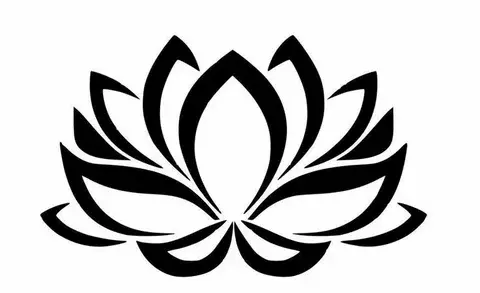What comes to mind when you hear “symbol of beauty“? Is it glowing skin, a confident smile, or maybe something deeper? These days, beauty is a loaded term, and the symbol of beauty isn’t one-size-fits-all. Sure, we’ve seen trends over the years, from hourglass figures to bold eyebrows, but beneath it all, people are craving authenticity. They’re asking: What makes beauty truly beautiful? Is it something you can see, or does it go beyond what meets the eye?
Let’s unpack this, break down the buzzwords, and figure out what beauty symbolizes in our world today. Spoiler: It’s more than just looks.
What Beauty Meant and What It Means Now
Beauty standards have been around for ages, shaping how we see ourselves and each other. Back in the day, beauty might have meant a specific face shape or a specific skin tone. Now? Not so much.
Today, people are finding beauty in imperfections, personality, and even the quirks that make us different. The symbol of beauty has shifted from being purely physical to embracing inner qualities. It’s become more about self-expression and confidence than fitting into a mold. But that doesn’t mean the world’s done with all the superficial stuff; it just means there’s room for more.
Why the Change?
It boils down to culture. Social media, cultural movements, and personal empowerment have all played a role in broadening the symbol of beauty. Now, you don’t need a team of stylists to tell you what’s “in.” You set your own standards.
The Old Symbols of Beauty vs. Today’s Reality
Here’s a quick snapshot of what was once considered the “symbol of beauty” and how things have changed:
- Perfect Skin
Then: Clear, flawless, wrinkle-free skin was everything.
Now: People flaunt freckles, birthmarks, and even scars. They see them as marks of uniqueness. - Curves or No Curves?
Then: We’ve had waves – from Marilyn Monroe’s curves to Kate Moss’s waif look.
Now: Anything goes. Body positivity celebrates all shapes, and everyone is encouraged to embrace their natural figure. - Face Shapes
Then: Oval was the gold standard; round or square was less desired.
Now: Every face shape has its charm. Contouring? Optional. Highlighting uniqueness? Essential.
People are realizing beauty doesn’t mean fitting into a box, and the symbol of beauty isn’t some ideal you see in a magazine. It’s personal. It’s flexible. And it’s something you get to define.
Why Does Society Care So Much About Beauty?
Here’s the million-dollar question. Why do people obsess over the symbol of beauty? For a lot of folks, it comes down to validation. Society often ties beauty to value and worth. It’s why beauty products fly off shelves and why people scroll Instagram, double-tapping that perfect shot.
But there’s a twist. The deeper desire isn’t just to look good—it’s to feel good. Beauty’s been linked with confidence, with respect, and even with success. Studies have shown that people who are perceived as attractive often receive better opportunities in life. Fair? Probably not. But it’s one reason why the symbol of beauty holds such weight.
Redefining Beauty: What Makes You Feel Beautiful?
Here’s where it gets real. Beauty isn’t about what people see; it’s about what you see. A personal symbol of beauty could be anything that makes you feel strong, capable, and at ease in your own skin. For some, it’s a daily skincare ritual that brings peace and a sense of control. For others, it’s finally embracing those quirks they once tried to hide.
Ask Yourself:
- What makes you feel genuinely good about yourself?
- What’s one physical feature you love, even if no one else notices it?
- Is there a skill or quality you have that you’re proud of?
These are the things that shape your own symbol of beauty. Not the filters, not the trends, but the stuff that actually brings you joy.
How Social Media Is Shaping Beauty (Again)
We’ve gotta talk about the role of social media here. Instagram, TikTok, and even Pinterest have created a beauty feedback loop. People see what’s popular, try it, post it, and the cycle continues. Social media keeps beauty trends evolving faster than ever—but that doesn’t mean they’re all bad.
The upside? Social media has made room for diversity. People with different skin tones, body types, and unique styles have platforms to share their beauty. Suddenly, the symbol of beauty isn’t just about one look; it’s a whole spectrum.
The downside? Comparison culture. It’s easy to get caught up in everyone else’s highlights and think they’re the new standard. But remember, you’re seeing the best moments. Even influencers have days when they don’t feel their best.
Common Symbols of Beauty Across Cultures
It’s not just Western standards driving the conversation on beauty. Across the globe, people have different symbols of beauty that speak to unique cultural ideals:
- East Asia: Skin quality is paramount—smooth, even, and glowing skin is highly valued. Double eyelids and small noses are often popular beauty standards.
- Africa: Natural hair and traditional body art (think tattoos or scarification) are considered beautiful in many communities, symbolizing identity and heritage.
- Middle East: Big eyes, expressive features, and dark, thick hair are highly admired, and modesty in fashion plays a role in beauty ideals.
- Latin America: Curves are celebrated, and an hourglass figure is often considered the ideal.
Understanding beauty across cultures helps us see that the symbol of beauty is diverse, flexible, and heavily influenced by heritage. When we look at the world this way, we realize that beauty is about far more than physical traits; it’s deeply tied to identity.
The Inner Work of Feeling Beautiful
You can have the world’s most “ideal” face or body and still feel insecure. Real beauty goes beyond skin-deep, and that’s where inner work comes in. The symbol of beauty doesn’t have to stop at appearance—it can be about the qualities that make you, you.
Here’s how to redefine beauty for yourself:
- Practice Self-Acceptance: Know that flaws are natural. The most stunning people often have something “imperfect” about them. It’s what gives them character.
- Develop Inner Confidence: Beauty isn’t just what people see—it’s how you present yourself. When you carry yourself confidently, people notice.
- Embrace Growth: Learn new things, expand your mind, and discover passions. Real beauty radiates from within, and it’s hard to fake that.
FAQs About the Symbol of Beauty
1. What is a symbol of beauty?
A symbol of beauty can be any quality or feature—physical or inner—that represents attractiveness or elegance to someone. Traditionally, it was often linked to physical appearance, but today it includes personality traits, skills, and individual quirks.
2. How has the symbol of beauty changed over time?
In the past, beauty was largely defined by rigid standards, like clear skin or a specific body shape. Now, beauty is more individual and inclusive, allowing people to celebrate diverse looks and personalities.
3. Why do people care so much about beauty?
Beauty often influences how people feel about themselves, and society sometimes links beauty with worth or value. While this can create pressure, there’s a growing movement to redefine beauty in more personal, empowering ways.
4. How do I find my own symbol of beauty?
Focus on what makes you feel good about yourself. Embrace traits and skills that bring you joy or pride, and work on developing inner confidence and self-acceptance.
5. Does social media impact our view of beauty?
Yes, social media shapes beauty standards by amplifying trends and often creating an idealized view of life. While it can promote diversity, it also encourages comparison, so it’s essential to follow accounts that uplift and inspire.
Final Thoughts: Finding Your Own Symbol of Beauty
The symbol of beauty isn’t something you can find in a magazine or on social media—it’s what resonates with you.
Whether it’s glowing skin, a strong personality, or a unique talent, beauty is what makes you feel your best.
In a world that’s constantly redefining beauty, the real question isn’t whether you fit a standard.
The real question is: What’s your symbol of beauty?
And remember, that answer is yours alone.
Read More: SkinCareSensation

